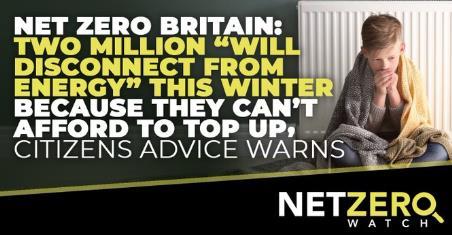Climate Concepts
McGill University, Montreal, Canada
November 2024
Clintel Conference in Prague
Gerald Ratzer
Professor Emeritus
Overview
• Introduction
• Scientific Method
• Climate Research using simple methods
• Two climate concepts for Atmospheric understanding
• Why Net Zero is an unnecessary disaster
• Conclusions
• Make an observation.
Scientific Method
• Ask a question, build a model . . .
• Form a hypothesis, or testable explanation.
• Make a prediction based on the hypothesis.
• Test the prediction.
• Iterate: use the results to make new hypotheses or predictions.
• Feynman – If the prediction disagrees with observed results – the hypothesis is wrong! The IPCC Climate models fail this test.
• Kelvin – All Science is numbers.
• Roger Pielke
Jr Only Science offers a path to truth, not surveys of expert opinion.
Summary of “The Story of CO2” – Benefits of CO2
• Carbon dioxide (CO2) is vital to all life of Earth
• Photosynthesis combines CO2 and H2O and sunlight
• Produces oxygen and sugars – which plants make into leaves, seeds, ..
• Ideal levels of CO2 for optimum growth is 1,200 to 1,500 ppm
• Photosynthesis stops below 150 ppm and plants (and all life) die
• The rise of CO2 from 300 to 420 ppm has increased to LAI by 30%
• The Earth has greened by some 30% and crop yields grown as much
• CO2 is not a pollutant and should not be reduced or buried!
There is no Climate Emergency Climate deaths fall 98%
Lomborg & Epstein
Electrical Energy costs: Quebec 5 c/kWh UK 40 c/kWh Germany 53 c/kWh (c = US cents)
More people die from cold than heat, by 9 to 1.
Statista
Comments on our Research methodology - 1 of 3
• Our research is based on collecting the temperature and humidity at 20 locations around the Earth, every month, for a year. These sites were chosen to cover the widest range of different climatic conditions from the Poles to the Tropics.
• Empirical data was collected from AccuWeather using a cellphone. Scientific Method in action!
• This exercise can be done by teenagers in school.
Comments
on our Research methodology - 2 of 3
• We assert this surface (~2m) data (Temperature and Humidity) includes all the local physical effects from latitude, elevation, Sun angle, Sun's variability, proximity to oceans and lakes, clouds, UHI, precipitation, wind, any recent volcanic action, as well as . . .
• The interaction of the 99% non-GHG gases N2(78%), O2(20%), and Ar(1%), and the main GHGs of water vapor and CO2 (the remaining ~1%) make our weather.
Comments on our Research methodology 3 of 3
• This collected data (Temperature and Humidity) is entered into an Excel file, which is in the public domain along with our papers.
• An add-in to the Excel sheet is used and behaves as any other function. This add-in is called Humidair and has a wide range of capabilities.
• This is based on the Ideal Gas Laws – (PV = nRT) Pressure x Volume α Temperature (α is proportional)
• Comments on this research methodology are welcome. It appears to be different from what other researchers in the area do.
Output of our Research
* Guam
Impact of Feedbacks
• Feedbacks are often discussed. We believe the temperature and humidity capture all the local feedbacks.
• Chatelier’s Principle – states that changes in the temperature, pressure, volume, or concentration of a system will result in predictable and opposing changes in the system to achieve a new equilibrium state.
• Happer and Lindzen also address the feedback factors saying they are mainly negative in Nature to have a quasi-stable (yet dynamic) system.
• “I think we both agree that the enthalpy of added CO2 is nearly irrelevant to climate.” - Happer
Using Enthalpy
• Enthalpy is a pure measure of total heat for a sample – kJ/kg
• Choose two locations and get a reading for their temperature and humidity
• Finding the difference in enthalpy of gases like water vapour, CO2, methane and nitrous oxide is possible, using their molar mass.
• The recent paper shows how the calculation is done for a sample of each gas. We have studied all 61 GHGs.
• For CO2 at 420 ppm the warming effect is calculated to be 0.00496°C
• Too small to measure!! Doubling CO2 concentration to 800 ppmthe warming increase is still immeasurably small (~0.01°C)!
Two Climate Concepts – RTC and HTC
• There are two main concepts in
Atmospheric Physics
• RTC is the Radiation Transfer Concept
• HTC is the Heat Transport Concept
• They are both important and both are needed to fully understand our weather and climate
• Weather and Climate are very complex systems
• RTC needs an understanding of quantum physics, photons, SB, etc
• HTC needs a knowledge of The Laws of Thermodynamics – easier!
RTC – Radiation Transfer Concept
• The main source of our energy is the Sun
• The Sun emits energy as photons, which travel at the speed of light
• These photons vibrate over a wide range of frequencies – the Spectrum
• The next slide shows a section with UV, visible and Long wave Infrared
• At the Top of the Atmosphere (TOA) about 1,366 watts/m2 arrive
• The albedo is 0.30 or about 30% of the incoming sunlight is reflected
• About 240 watts/m2 arrives at the surface on average (~ quarter)
• At the surface about 2/3 cools by local heat and 1/3 by radiation
Howard Hayden
RTC – Radiation Transfer Concept 2 of 2
• What happens when an individual photon arrives at the Earth’s surface?
• It can be scattered or absorbed by the dense, moist surface air
• This process is called thermalization and converts the photon energy to heat energy
• This is where HTC takes over
• The important air molecules are Nitrogen, Oxygen and Water Vapour
• The optical depth/transparency at the surface is very opaque to photons
• In the upper atmosphere an excited air molecule can relax – by spontaneous emission and emits a new photon to space
any direction
HTC
– Heat Transport Concept
• Once a photon has been thermalized – its energy is now heat
• The heat of a gas in the average kinetic energy of the molecules
• Heat can move with a medium (gas, liquid or solid) by a few processes
• Conduction, Convection, Evaporation, and Gravity
• In the Troposphere the important one is Convection from the surface - up
• In the Tropics, much of the sunlight energy is used to evaporate water
• This phase change from water-to-Water Vapour (WV) must overcome the
Latent Heat of evaporation – 2454 kJ/kg at 20C.
• The warm moist air moves upwards, against gravity, to the dew point where condensation takes place, releasing heat for more upward travel.
HTC
Heat Transport Concept 2 of 2
• The atmospheric winds and the oceans are the main way to transfer heat from the Tropics to the poles.
• Considering there is 1,000 times more heat in the oceans than the air
• The ocean currents are the major way to transport heat to the poles
• The Gulf Stream moves at ~4 knots, but keeps Scandinavia ice free
• The trade winds, jet streams and Hadley cells move heat as well
• Under the oceans there many volcanoes which heat the oceans
• These give rise to El Niño, and the “Warm blobs” in the Pacific and Atlantic
Both RTC and HTC are needed
• Photons travel at the speed of light. Heat travels very slowly!
• At the TOA – Top of the Atmosphere (edge of space) only radiation in the form of photons can cross this boundary in either direction.
• However, once an incoming photon strikes the Earth’s surface it is transformed into local heat, found in the local air molecules.
• In the Troposphere the Laws of Thermodynamics dictate how heat is used and moved. This controls the weather.
• First Law: Energy cannot be created or destroyed (can be transformed)
• Gravity is an important force and compresses the air gases, which heats them up. The lapse rate is the change in temperature ~ 9.8°C/km.
Climate Discussion Group 2024 – CDG2024
• This is an ongoing, online moderated discussion
• There are two main threads
• 1. RTC and HTC and atmospheric physics (Technical thread)
• 2. Recommendations for Policymakers (Less technical – next few slides)
• About 100 have been invited to participate and contribute to CDG2024
• A Newsletter is sent out with updates on new material – once a week
• Anyone can view the discussion at allaboutenergy.net
• Email Gerald.ratzer@mcgill.ca to join or for more information
Why Net Zero is an unnecessary disaster 1 of 2
• The EU, Germany and the UK are leading the way to Net Zero. “A pathway for the global energy sector to achieve net zero CO2 emissions by 2050.”
• These countries have enshrined in laws reaching Net Zero by 2050.
• They have among the highest electrical energy rates in the World. California at 36 cents/kWh is also on the high side.
• Wind and solar are intermittent, unreliable and expensive.
• Wind, solar, nuclear and hydro do not produce any products.
Why Net Zero is an unnecessary disaster 2 of 2
• Crude oil, gas and coal are needed by the petrochemical industry. People in the wealthier countries use some 6,000 products – plastics, paints, resins, tires, cars, phones, etc.
• Countries are losing their industrial capacity to make steel, to make chemicals, mining, etc. – e.g. BASF, Bayer, DSM.
• The farmers and others are opposing the restrictions.
• Many countries have elections this year.
• Many politicians will be losing their positions.
Conclusions 1 of 3
• There is no need to reduce CO2 and no need for Net Zero.
• Understand the benefits and disadvantages of all sources of energy. A comprehensive cost/benefit study is needed.
• The population of the Earth has gone from 1 to 8 billion over the last 200 years, attributed to the transition to coal and oil.
• World deaths from Climate causes have declined 98% over the last century. Increased Resilience and Climate mastery.
Conclusions 2 of 3
• People climb out of poverty by having a safe, stable environment (no wars) and inexpensive, reliable electricity.
• Burning fossil fuels does generate pollution in the form of soot and toxic gases. There are clean energy technologies to remove most of this pollution (scrubbers and precipitors).
• CO2 is not a pollutant and generates a tiny warming effect.
• CO2 is boosted from 400 ppm to 1,200 ppm for optimal growth, by commercial greenhouse growers.
Conclusions 3 of 3
• The World Bank should not tell poorer countries to use unreliable power generation (windmills and solar). They should fund reliable (24 x 7) power plants and pollution reduction gear.
• Poverty reduction is the top priority for the UN – not Climate Change (#13)! See the 17 Global GoalsSustainable Development
• Countries should transition from fossil fuels to nuclear for generating electricity. Small Modular Reactors?
Resources and Links
• Lindzen, Richard – MIT, CO2 Coalition ICSF GWPF Talk Paper
• Happer, Will – Princeton, CO2 Coalition ICSF GWPF Talk Paper
• John Christy and Roy Spencer at UAH – Talk Talk ICSF
• Judith Curry – Climate Etc. Talk
• John Shanahan – allaboutenergy.net Search: Lightfoot Ratzer papers
• Benny Peiser – GWPF Global Warming Policy Foundation ICSF Talk
• Guus Berkhout – Clintel WCD – World Climate Declaration Talk
• Alex Epstein – Fossil Future Talk








